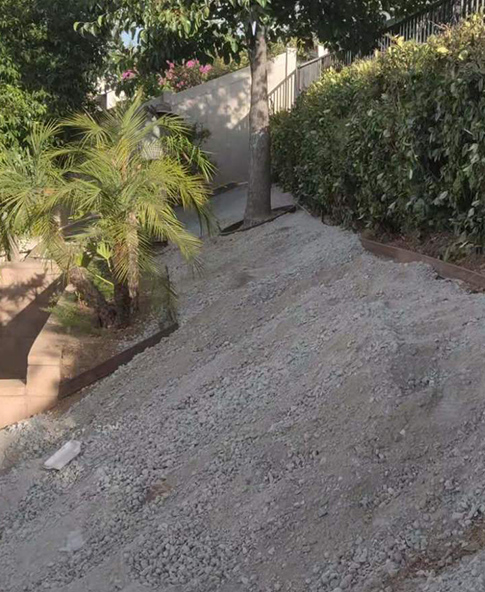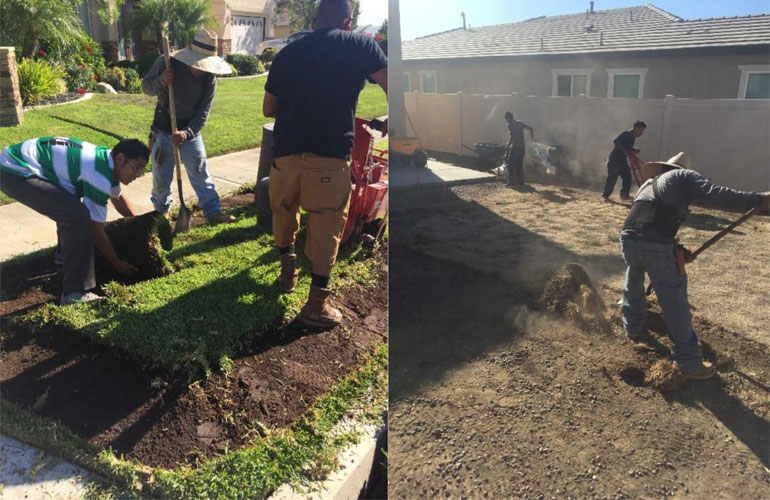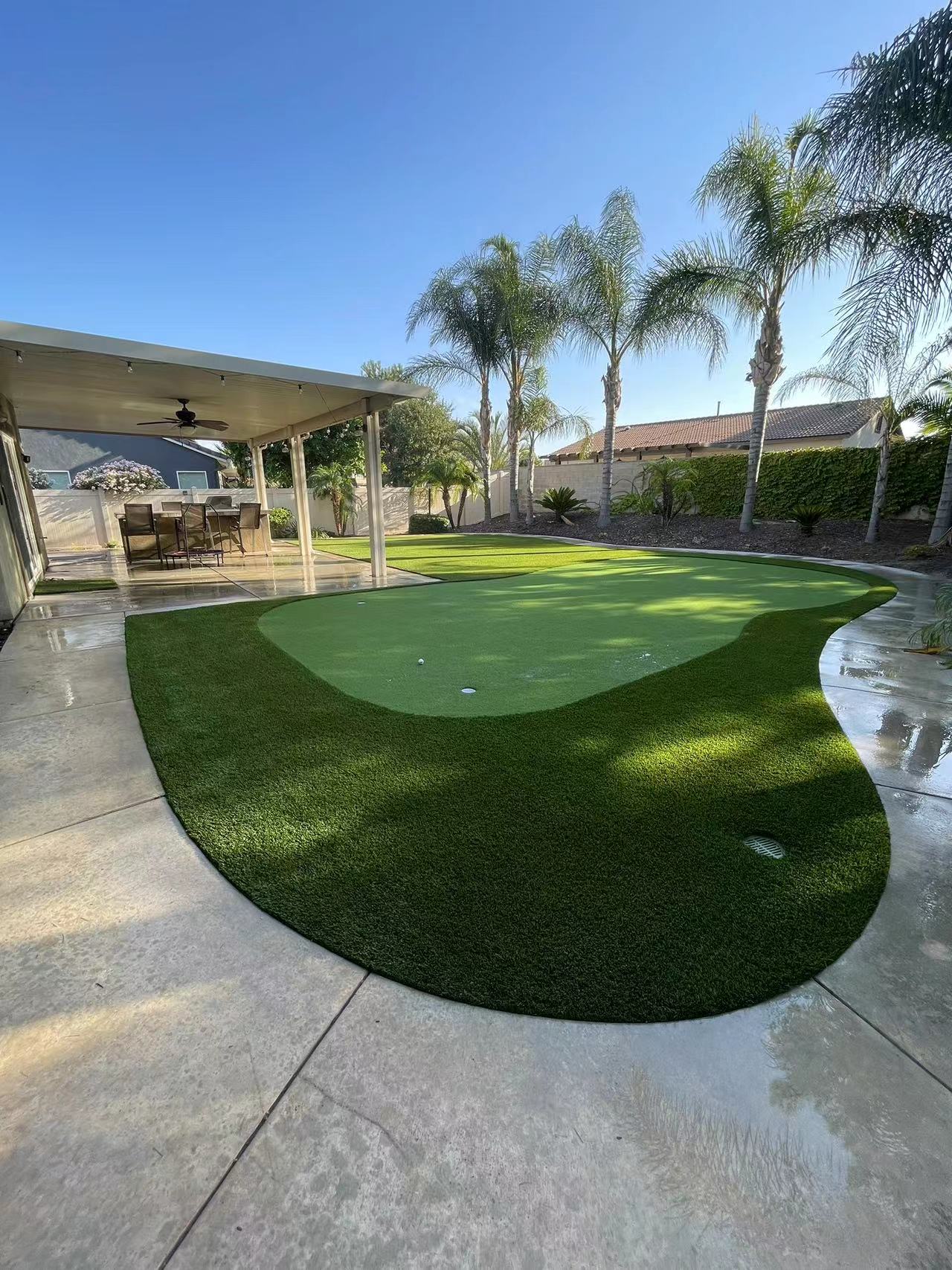Laying artificial grass on uneven paving slabs requires careful preparation and leveling to ensure a smooth and visually pleasing surface. Here's a step-by-step guide to achieve this:

Clear the Area:
a. Remove any debris, weeds, or loose material from the paving slabs.
b. Clean the surface thoroughly to ensure proper adhesion and a smooth finish.

Leveling and Smoothing:
a. Identify the areas of unevenness on the paving slabs.
b. Use a hammer and chisel to level or remove any high spots or protruding edges of the slabs.
c. Fill in any low spots or gaps with a self-leveling compound or a suitable filler to create a smooth surface.

Adding a Base Layer:
a. Lay a geotextile weed membrane over the entire area to prevent weed growth through the artificial grass.
b. Spread a layer of crushed stone or aggregate (typically 2-3 inches) over the area to create a stable base.
Compact the Base:
a. Use a mechanical compactor to compact the base layer thoroughly. This will ensure a solid and even surface for the artificial grass.
Artificial Grass Installation:
a. Roll out the artificial grass over the prepared area and allow it to acclimate and flatten for a few hours.
b. Trim the edges of the artificial grass to fit the shape of the paving slabs.
Securing the Grass:
a. Use landscape staples or adhesive to secure the edges and corners of the artificial grass.
b. Make sure the grass is stretched and properly secured to avoid any wrinkles or sagging.
Infill Material:
a. Spread and evenly distribute the infill material (e.g., silica sand or rubber) over the artificial grass to provide stability and support for the fibers.
Brushing and Final Touches:
a. Brush the grass fibers with a broom or a power brush to help them stand upright and achieve a natural look.
b. Check for any unevenness or wrinkles and adjust the grass as needed.
By following these steps and taking the time to properly prepare the surface, you can achieve a level and aesthetically pleasing artificial grass installation on uneven paving slabs. If you're uncertain about the process, consider consulting with a professional installer to ensure a successful outcome.
